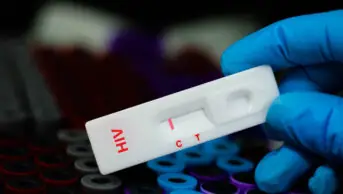My daily newspaper recently carried a story about a statue that has stood in Stockton-on-Tees for nearly 40 years but has now been revealed as depicting the wrong man.
Erected in 1977, the statue was intended to honour one of the town’s greatest sons, John Walker, on the 150th anniversary of his invention of the friction match. But it turns out that the effigy was based on an etching of another John Walker, a London actor and elocutionist who never visited the town. The error was discovered in 1990, but the borough council kept quiet and only disclosed it when a councillor recently called for the bust to be moved to a more prominent position.
Although the news item did not mention it, the town’s greatest son happened to be a pharmacist. John Walker was born in Stockton-on-Tees in 1781, third son of a grocer, draper and druggist. After attending the local grammar school he served an apprenticeship with the town’s principal surgeon and doctor and was appointed an assistant-surgeon. But he never managed to get used to the sight of blood and flesh wounds, and so he left and went on to study pharmacy in Durham and York.
After working for a while for a wholesale druggist, Walker returned to his home town in 1812. In 1819, aged 38, he opened his own chemist and druggist business at 59 High Street. Unlike most pharmacists, he worked not only with the natural materia medica but also introduced some chemical substances. It is said that he was a merry fellow whose sunny smile sent patients away feeling much better even before they took his physic.
When not working in his shop, Walker experimented with chemicals in an attempt to find a means of obtaining fire easily. A number of chemical mixtures were known that would ignite suddenly, but they would burn away before the flame could be transmitted to a slow-burning item such as a wooden spill. To reduce the fire risk, he worked within his stone hearth at home. One day he accidentally scraped the hearth with a small stick that had been dipped in a mixture he was working on. The stick burst into flame.
Walker went on to develop a flammable paste made with antimony sulfide, potassium chlorate and gum arabic, into which he dipped cardboard strips coated with sulfur (to conduct the flame to the wood). Once the paste dried, the match could be ignited with just a quick scrape on a rough surface such as sandpaper.
Walker began selling his “friction lights” in his pharmacy in 1827, and they rapidly became popular with the townsfolk. He soon replaced the cardboard with wooden splints and began selling into neighbouring towns.
Walker’s matches were not perfect. The burning sulfur coating would sometimes drop from the stick, with a risk of damage to flooring or the user’s clothing. Because of this problem, he never tried to patent his invention.
When Walker retired (some years before his death in 1859 at the age of 78), the business was taken over by Sir Isaac Holden (1807–97), who sold his own matches across the world and became widely credited with inventing the match. But after Holden died Walker’s original shop ledger came to light. It showed clearly that Walker was selling friction matches at least two years before Holden.
John Walker loved a joke, so perhaps he would have seen the funny side of being feted with a statue of someone else. The borough council is now planning to create a more fitting memorial by erecting a plaque at the Castlegate shopping centre, which covers the site of his town centre house.

